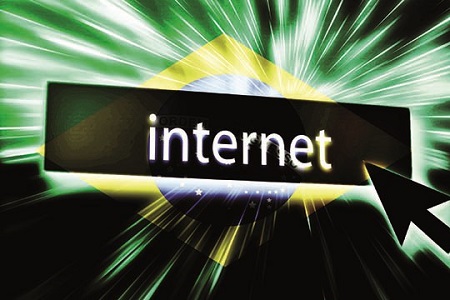Emerging and Connected: Insights on Broadband from Brazil

We are always online. We pay our rent, buy furniture, take language lessons and schedule our next appointment to the doctor, let alone the time spent on social media. The Internet is part of our lives and we take it for granted. In fact, we barely remember how life was before we could wake up in the morning and check our smartphones. Besides making our lives easier, the Internet is also opening up a wide range of possibilities that go far beyond the uses described above, such as having access to different governmental services, receiving medical treatments and engaging in democratic debates.
This connected reality, however, is not true for many out there. According to the numbers recently published by the ITU, 95% of the global population lives in areas that are covered by a mobile-cellular network but 53% of the world is not using the Internet yet (ITU, 2016). Almost two-thirds of these Internet users, however, live in developing countries. There is a global “digital divide” which is widening the opportunities gap among those who have access to the Internet and the ones who do not, and there is also another divide related to the cost of such access. Moreover, the divide also entails the cost, quality and speed of the connection as even the definition of “broadband” varies from country to country.
While in 2015 developed countries had a bandwidth of 93 kbit/s per inhabitant, it is 13 kbit/s per inhabitant in developing countries, a considerably lower number (ITU, 2016). There is also a gap related to the price paid for accessing the Internet. By the end of 2015 the average global 1GB of mobile broadband prices corresponded to 5.5% of GNI p.c., but this number is still higher than the 5% goal established by the UN Broadband Commission. In fact, this number is much higher than the one advocated by the Alliance for Affordable Internet (A4AI), which argues that 2% or less of average monthly income is the ideal price.
Brazilians are heavy Internet users. It has been said to be the “social media capital of the world” by The Wall Street Journal. The prices paid for such use, however, are still high. The cost per megabyte of the mobile prepaid and postpaid broadband is much higher than the prices of other BRIC countries, such as Russia and India, both in absolute terms and in purchasing power parity (ITU, 2016). In order to change this reality, we need a concerted effort. While the private sector won’t solve this issue on its own, the public sector won’t do it by itself either.
In the new book, “Broadband in Brazil: Past, Present, Future”, edited by Peter Knight, Flavio Feferman and myself, we describe interesting initiatives aimed at solving the digital divide. The case of Netrocinha, is one of these interesting examples. Two young entrepreneurs decided to deploy fiber in Rocinha, the largest slum in Brazil, offering broadband with more affordable prices. There is also the case of the Ceará State Digital Belt, a public private partnership in the northeast of the country, showcasing how public investment can attract private investment. Another case is the Connected Amazon Program, which is deploying 8000 km of fiber under the Amazon River. Attempts to improve the regulatory framework for broadband as well as to public policy experiences are also addressed by the authors in the book.
According to the American Internet pioneer Vint Cerf, one of the endorsers of the book, “the story of Internet varies in every country”. The experiences shared in the book, however, can certainly be useful for other emerging markets, which face the challenge of bridging the digital divide and the opportunity of fostering development and growth if such goal is pursued.
***The book “Broadband in Brazil: Past, Present, Future” (Peter Knight, Flavio Feferman and Nathalia Foditsch – Orgs. – FGV Direito Rio/Novo Seculo) has been launched in Brazil and is can already be purchased online, here. The English version will be available in August 2016. ***
